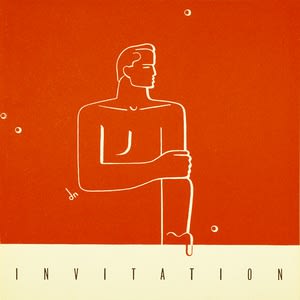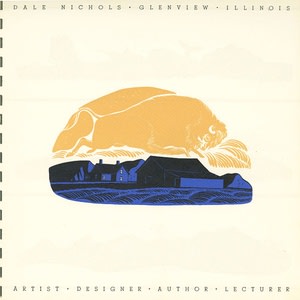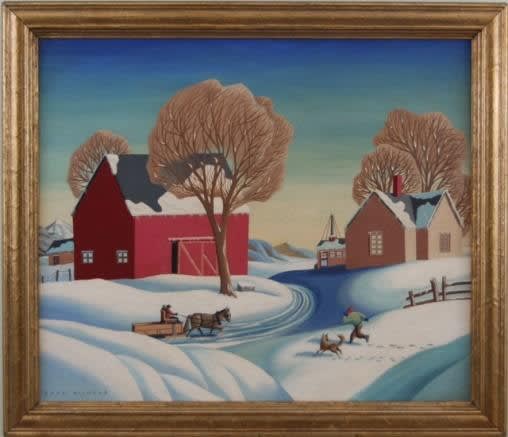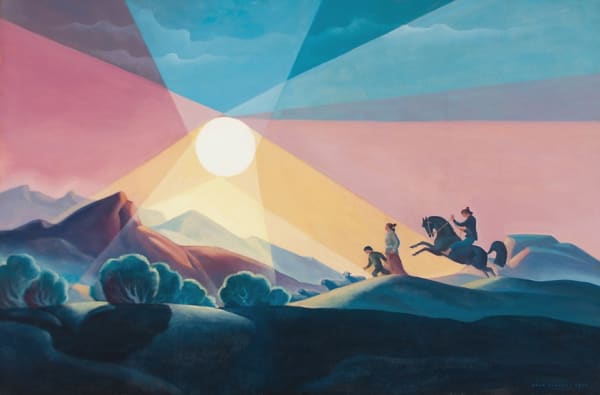Dale Nichols’ paintings of red Nebraska barns are what he is best known for and what have been increasingly coveted at auction. They are like comfort food, invoking a sense of peace and serenity.
Dale Nichols Garnering Greater Attention
His work is part of the permanent collections of The Metropolitan Museum of Art and the Smithsonian. For years after his death, in 1995, Nichols’ works usually sold above estimate, but not for the six figures they are beginning to garner at auction.
Mid-Nation Winter sold, last May for a record $120,000 at Shannon’s. What is most interesting about Nichols’ work is the way he himself executed and perceived it. Nichols was born on a farm in David City, Nebraska in 1904. He did chores, walked two miles to school and, eventually left the rural environment for Chicago to pursue a career in art. He became a very successful illustrator, who was able to create both sophisticated graphics and comforting landscapes.
Nichols talent was rewarded when his painting End of the Hunt won an award from the Art Institute of Chicago and which was purchased in 1939 by the Metropolitan Museum of Art.
In 1940, Nichols left Chicago and moved to Arizona. He taught for a while and then set up a school in Tubac, Arizona which lasted only a year.
The Psychology of Dale Nichols
Nichols began to travel, paint and write. He lived in Texas, Michigan, Louisiana, California, Alaska, Nevada and spent years in Guatemala. He wrote extensively, and published an illustrated book called Let There Be Light, that describes Caravaggio’s use of light, a feature that is clearly important in Nichols’ own works.
“I first compose my painting in an euphonious arrangement of rect-hedrons, tetrahedrons and spheroids,” he wrote, “then relieve the resultant static effect by opposing line, adding textures, symbolic abstractions and certain fragmentations (following Freudian interpretations) in colors which relate to preconceived mood.”
Dale Nichols was a Regionalist painter in the sense that he created paintings of the many regions to which he traveled. A closer look at the structured, geometric, abstract compositions of his work makes it more difficult to define.
Nichols was interested in psychology and mysticism. In a letter to his niece, Ruth, he wrote, “Hell, Ruth, I’ve never painted a realistic painting in my life.”
Dale Nichols at Surovek Gallery
Please contact us if you would like more information about the works of Dale Nichols available at Surovek Gallery.
References:
Henry Adams. Go Behind the Red Barn and Rediscover Dale Nichols. smithsonian.com. January, 2012.
Amanda Mobley Guenther. Dale Nichols: Transcending Regionalism. Bone Creek Museum of Agrarian Art. January, 2012.
https://www.metmuseum.org/art/collection/search/487858
http://www.artfixdaily.com/artwire/release/6646-large-format-oil-on-canvas-painting-by-dale-nichols




